Top Rankings
Morgan School District ranks among the top 20% of public school district in Utah for:
Category
Attribute
Overall Rank
Highest overall rank (Top 20%)
Math Proficiency
Highest math proficiency (Top 20%)
Science Proficiency
Highest science proficiency (Top 20%)
Graduation Rate
Highest graduation rate (Top 20%)
Community Size
Largest student body (number of students) (Top 1%)
For the 2025 school year, there are 2 public preschools serving 59 students in Morgan School District.
Public Preschools in Morgan School District have a diversity score of 0.13, which is less than the Utah public preschool average of 0.48.
Minority enrollment is 7% of the student body (majority Hispanic), which is less than the Utah public preschool average of 31% (majority Hispanic).
Overview
This School District
This State (UT)
# Schools
8 Schools
408 Schools
# Students
3,235 Students
195,137 Students
# Teachers
167 Teachers
9,057 Teachers
Student : Teacher Ratio
19:1
19:1
District Rank
Morgan School District, which is ranked within the top 30% of all 153 school districts in Utah (based off of combined math and reading proficiency testing data) for the 2020-2021 school year.
The school district's graduation rate of 93% has increased from 90-94% over five school years.
Overall District Rank
#27 out of 154 school districts
(Top 20%)
(Top 20%)

Math Test Scores (% Proficient)
(20-21)51%
39%
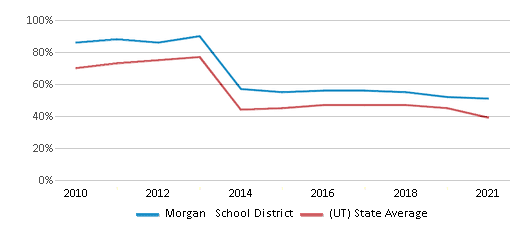
Reading/Language Arts Test Scores (% Proficient)
(20-21)50%
43%

Science Test Scores (% Proficient)
(20-21)56%
45%
Graduation Rate
93%
88%
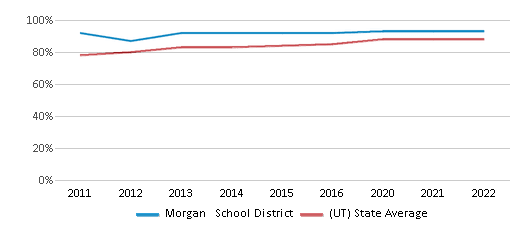
Students by Ethnicity:
Diversity Score
0.11
0.48
# American Indian Students
6 Students
2,004 Students
% American Indian Students
n/a
1%
# Asian Students
9 Students
2,792 Students
% Asian Students
n/a
2%
# Hispanic Students
95 Students
41,494 Students
% Hispanic Students
3%
21%
# Black Students
9 Students
2,695 Students
% Black Students
n/a
1%
# White Students
3,057 Students
134,941 Students
% White Students
95%
69%
# Hawaiian Students
5 Students
3,551 Students
% Hawaiian Students
n/a
2%
# Two or more races Students
54 Students
7,647 Students
% of Two or more races Students
2%
4%
Students by Grade:
# Students in PK Grade:
59
16,151
# Students in K Grade:
195
23,940
# Students in 1st Grade:
169
24,978
# Students in 2nd Grade:
212
26,403
# Students in 3rd Grade:
228
26,290
# Students in 4th Grade:
211
26,559
# Students in 5th Grade:
255
27,209
# Students in 6th Grade:
240
18,075
# Students in 7th Grade:
261
1,029
# Students in 8th Grade:
262
1,462
# Students in 9th Grade:
301
1,079
# Students in 10th Grade:
277
570
# Students in 11th Grade:
303
560
# Students in 12th Grade:
262
832
# Ungraded Students:
-
-
District Revenue and Spending
The revenue/student of $10,909 is higher than the state median of $10,732. The school district revenue/student has stayed relatively flat over four school years.
The school district's spending/student of $9,594 is less than the state median of $10,829. The school district spending/student has stayed relatively flat over four school years.
Total Revenue
$35 MM
$7,309 MM
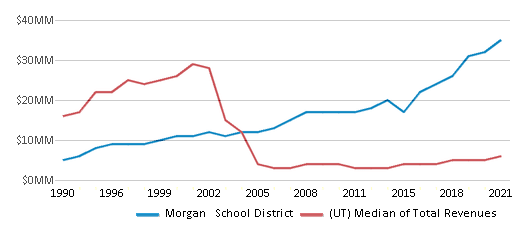
Spending
$31 MM
$7,375 MM
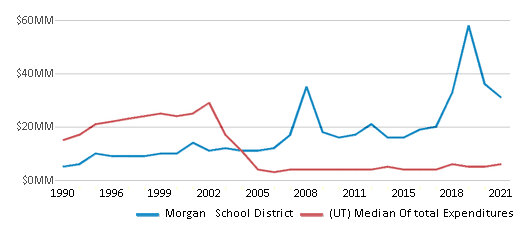
Revenue / Student
$10,909
$10,732

Spending / Student
$9,594
$10,829
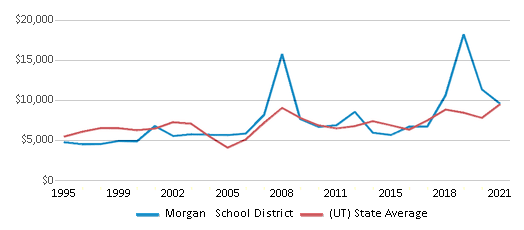
Best Morgan School District Public Preschools (2025)
School
(Math and Reading Proficiency)
(Math and Reading Proficiency)
Location
Grades
Students
Rank: n/an/a
Morgan Preschool
Special Education School
240 E Young St, 240 E Young St
Morgan, UT 84050
(801) 829-3411
Morgan, UT 84050
(801) 829-3411
Grades: PK
| 37 students
Rank: n/an/a
6064 N. Silver Leaf Drive
Morgan, UT 84050
(801) 876-3041
Morgan, UT 84050
(801) 876-3041
Grades: PK
| 22 students
Recent Articles

Year-Round Or Traditional Schedule?
Which is more appropriate for your child? A year-round attendance schedule or traditional schedule? We look at the pros and cons.

Why You Should Encourage Your Child to Join a Sports Team
Participating in team sports has a great many benefits for children, there is no doubt. In this article you will learn what those benefits are.

White Students are Now the Minority in U.S. Public Schools
Increasing birth rates among immigrant families from Asia and Central and South America, combined with lower birth rates among white families, means that for the first time in history, public school students in the United States are majority-minority. This shift in demographics poses difficulties for schools as they work to accommodate children of varying language abilities and socio-economic backgrounds.





